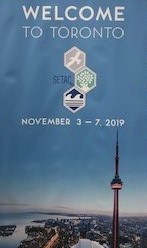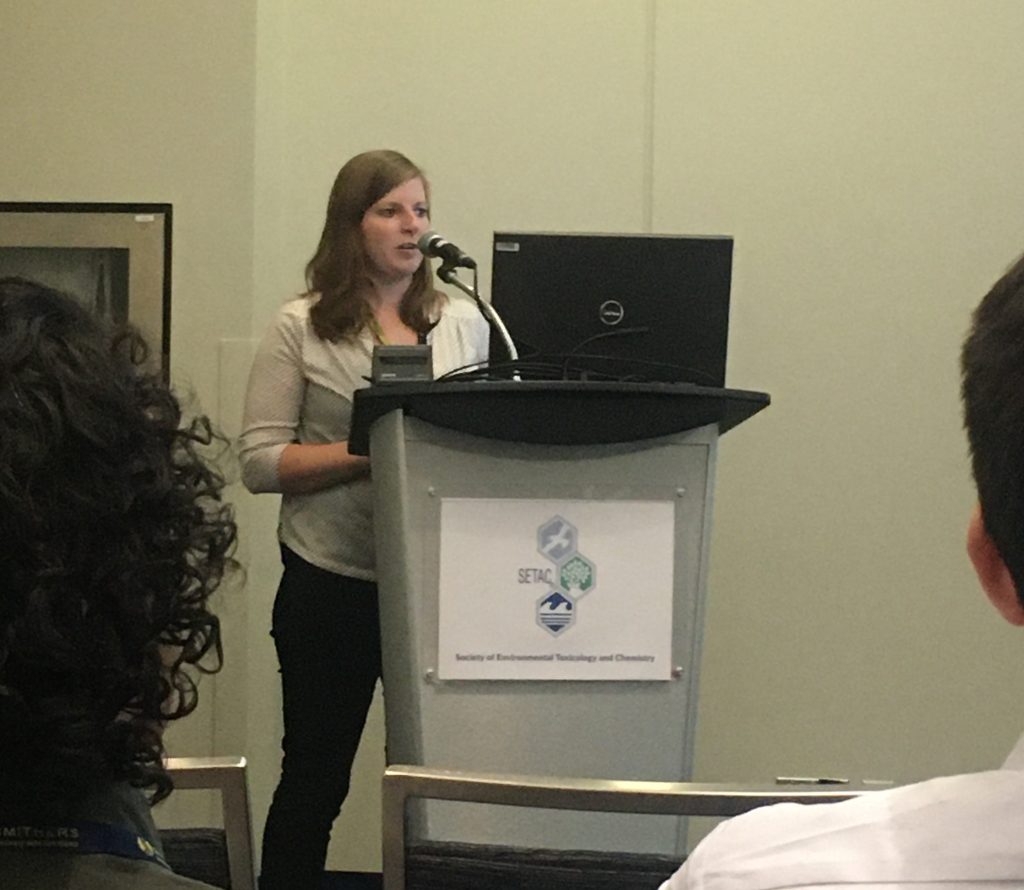In this post, Jakob Wolfram reports on how Landau researchers contributed to the 40th Annual SETAC North America conference in Toronto from November 3-7, 2019.

The Society of Environmental Toxicology and Chemistry (SETAC) is a professional, global organization, dedicated to analysing and resolving environmental issues, managing and regulating environmental resources, and furthering environmental education. With this year’s theme “Great together: Separate Challenges and Collective Solutions”, scientists from Landau were able to actively contribute to numerous sessions and poster presentations.
The conference started with engaging workshops, such as the “Introduction to R” held by Egina Malaj et al., a former student from the University of Landau. I, personally, had the pleasure of taking part in the eye-opening training course “Statistical Issue in the Design and Analysis of Ecotox Experiments” coordinated by John W. Green and Jeffrey C. Wolf, which are statistical experts with decades of theoretical and applied experience.

On Monday, Elena Adams presented her most recent research about the dermal uptake and toxicity of fungicides towards amphibians, using exposure scenarios that are most relevant in agricultural landscapes, such as those found all around Landau. Then on Tuesday, Alexander Feckler gave an interesting talk about differing sensitivities towards stressors between cryptic lineages of aquatic invertebrates. In his research, he showed how cryptic lineages of Gammarus fossarum respond differently to hazardous exposures of fungicides and insecticides.
On Wednesday, things got busy. Kelly Smalling from the United States Geological Survey kicked off a great talk about a global meta-analysis of fungicides occurring in surface waters and resulting risk for aquatic species. This work has been conducted in close collaboration with several researchers of the Landau Institute for Environmental Sciences (iES). Immediately after Kelly’s talk, Mirco Bundschuh provided an extensive and captivating overview of both challenges and opportunities when it comes to large scale risk assessments of pesticides, priming new thoughts on how to engage with such challenges to surface water integrity. Afterwards, I had the pleasure of giving a talk about the meta-analyses that we have conducted here in Landau in the context of the United States. In my work, I have given an extensive overview of insecticide risks in the U.S. and successfully applied modelling to describe and predict current impairments of surface waters based on numerous spatio-temporal risk drivers. The discussion afterwards was lively and positive, but also started a constructive exchange on how to adapt monitoring efforts in Canada to improve monitoring reliability.

In the afternoon, several posters were presented by researchers from Landau. Lara Petschick demonstrated her novel approach of estimating reliable and environmentally relevant ecotox endpoints for more than a thousand of substances, enabling researchers to provide more comprehensive environmental assessments. Mirco Bundschuh presented the SYSTEMLINK project, a new research project here in Landau that investigates the interactions between terrestrial and aquatic ecosystems experiencing anthropogenic stress. Also, Jochen Zubrod presented two posters in parallel, detailing his advances in using stable isotope analysis to trace indirect effects in aquatic species.
The 40th Annual SETAC North America conference in Toronto was an exciting experience and full success for the iES in Landau. We were able to contribute to diverse topics, establish new contacts around the globe, and integrate our expertise in upcoming projects or ideas. Given this experience, I recommend both students and researchers to contribute to next year’s conference!
